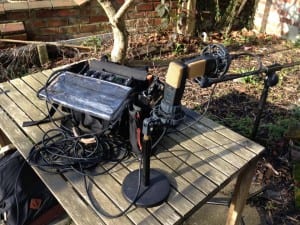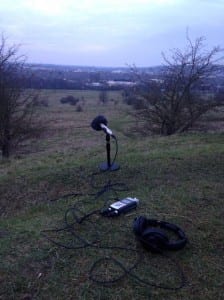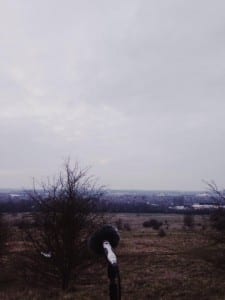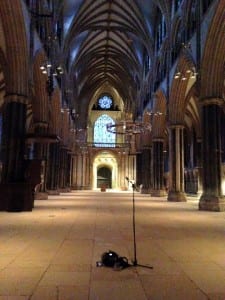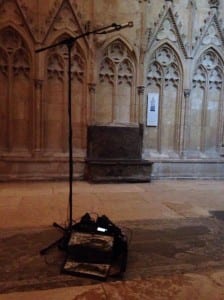I decided to experiment properly with mid/side recording in the field. I’ve done it a few times in the studio before, but never to capture ambience on location. I noticed that when linking two on the channels on the 633, there’s a M/S option. After a quick read of the manual, I figured out this was mid-side matrixing. I initially thought this meant I wouldn’t have to do anything to process the signal afterwards – but that turned out to be wrong, I still had to flip the phase and double up the figure 8.
I just set up in my garden – as I only had a tabletop mic stand and a full sized mic stand to play with, so I set them up on a table outside to experiment with the signal and see what it sounded like. My garden runs adjacent to a road, so while there was some nice nature sounds (birds etc) there was also unfortunately the drone of the cars on the road. As it was only an experiment it didn’t matter – the ambience could well be useful for a suburban soundscape at some point too.
The actual stereo sound was fantastic – a lot better by comparison than the X/Y mic i’ve used before. The center mic gives some really nice focus – while the figure 8 gives a lovely wide stereo spread. I used two 414’s in this example – but I may experiment with other microphones in the future. Possibly the Neumann – which i’m aware has a figure 8 pattern. The main issue with using these large diaphragm condensers is mostly portability, and as i don’t have a mic clip for mid-side, my option would be to cart out two mic stands with me whenever I want to record in the field. which isn’t an impossibility – it’s just a pain (as I usually walk to my locations).
A few people pointed out that they’d usually put the figure 8 mic on top of the cardioid. I didn’t see any reason to really, as that front angle is already covered – but might be something for me to remember to do in the future. The experiment was mainly just to see if the technique actually worked – which I really think it did.
(LO1)
